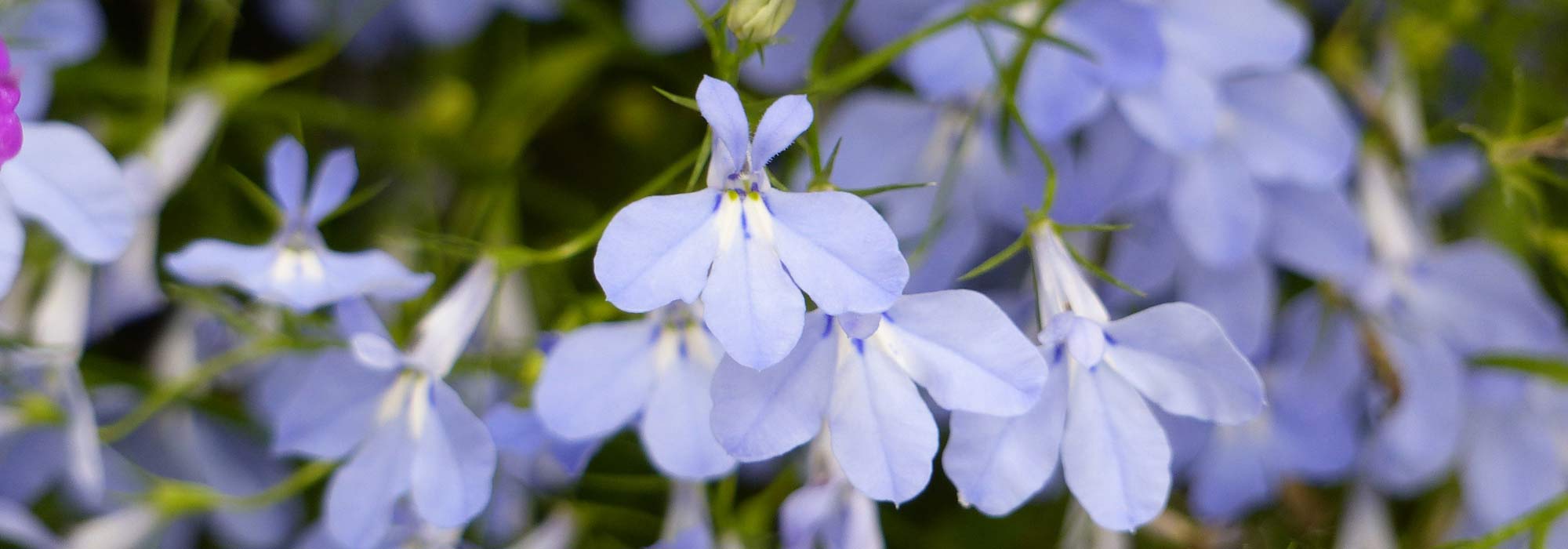
Lobelia: sowing, planting, growing and care
Contents
Lobelia in a nutshell
- Lobelias are perennials or annuals with long, abundant flowering in blue, white, red, pink or purple
- Their flowers in light clusters bloom continuously from May to October
- Annuals such as Lobelia erinus are kings of hanging baskets
- Easy to grow and maintain, lobelias prefer sunny or partially shaded positions and light, rich, moist, well-drained soil
- Upright, groundcover or trailing, lobelia lends itself to all sorts of uses in beds, borders, hanging baskets, window boxes or beside water features
A word from our expert
Known for its cascades of small blue or white annual flowers in window boxes or hanging baskets, the Lobelia is also a large perennial with striking colours.
If trailing Lobelia lobelias erinus with blue flowers (Lobelia pendula ‘Monsoon’) or white ‘White Cascade‘ is the star of hanging baskets from June to first frosts, perennial lobelia such as red cardinalis will make a splash for ornamenting flowerbeds, borders where soil stays cool in summer and even the edges of water features.
Generous and hardy (-7 to -20°C depending on species), the perennial lobelia of short lifespan thrives in non-scorching sun in fresh to moist, fertile soil that is well-drained.
The most tender lobelias will make pretty border plants or potted plants to overwinter sheltered from frost in cold regions.
Shrubby, mat-forming or trailing, lobelia lends itself to all sorts of displays to brighten even the smallest corner of garden or terrace with its vivid colours.
Blue lobelia (‘Hot Blue’), white lobelia or red lobelia, choose our lobelias among our collections of plug plants or our lobelia seeds for a summer in bloom! Essential in summer displays, hanging baskets and window boxes!
Description and botany
Botanical data
- Latin name Lobelia
- Family Campanulaceae
- Common name Lobelia, lobelia, Cardinal flower
- Flowering from May until autumn
- Height 0.10 to 1 m
- Exposure Sun, partial shade
- Soil type All, well-drained
- Hardiness -7°C-25°C depending on varieties
Genus Lobelia of family Campanulaceae includes 370 annual, perennial or shrubby species. Also called Cardinal flower, Lobelia grows in tropical and temperate regions worldwide, mainly in Americas.
Within this large genus, there are tall perennial lobelias (Lobelia cardinalis, Lobelia siphilitica and hybrid lobelias such as Lobelia x speciosa and Lobelia x gerardii) with their generous upright cluster flowering, spike-like, and more tender lobelias grown as annuals in our climates such as the king of hanging baskets, Lobelia erinus, with small exceptionally blue flowers, available in several dozen varieties (Lobelia ‘Hot Blue’, ‘Royal Blue’, ‘Water Blue’…).
Lobelias display very variable silhouettes with spreading, bushy, mat-forming, trailing to erect habit depending on species and cultivars. Annual lobelias, such as Lobelia erinus, which die back at first frost, are mat-forming or trailing species not exceeding 0.10 m in height, while perennial species form erect clumps from 0.50 to 1 m in height.
Numerous slender or sturdy ramified stems according to species quickly form a bushy clump. Although growth is rapid, perennial lobelia is actually a short-lived perennial that needs dividing to be maintained for many years in the garden.

Lobelia cardinalis – botanical illustration.
In spring, from a rhizomatous clump forming basal rosettes emerges a narrow, delicate foliage that provides a beautiful setting for flowering. All lobelias bear simple, alternate leaves along the stem, linear, ovate, oblong to lanceolate and dentate on the margins.
Bright green, medium green to dark green, sometimes tinged red or bronze, often glossy, sometimes slightly downy, leaves are 1 to 15 cm long and often sessile. Lobelia x speciosa stands out for very attractive purple to chocolate-tinged foliage borne on stems of the same hue. All hybrid lobelias are deciduous, their foliage disappears completely in winter; some, such as Lobelia laxiflora, retain evergreen leaves.
This delicate growth is overtaken by a quivering mass of flowers from June, sometimes from April depending on climate and first frosts. Annual lobelia flowers continuously from spring to autumn, while perennial lobelias generally bloom in mid-summer between July and September.
Each leafy stem ends in spikes of terminal or solitary clusters, light and more or less long (up to 45 cm), made of tubular two-lipped flowers with a very particular architecture. Their corollas measure 0.5 to 5 cm across and are divided into five lobes with two very fine upper petals and three broader lower petals, rather spread fan-like suggesting <strong;>butterfly wings or snapdragon flowers. Calyx tubes are generally swollen.
In Lobelia laxiflora, also called “loose-flowered lobelia”, flowers are longer and narrower, semi-pendulous and end in saw-tooth margins with two yellow lips.
Whether perennial or annual, lobelia is available in many colours depending on variety: small ultramarine-blue flowers punctuated with a tiny white eye of Lobelia erinus (‘Hot Blue’, ‘Royal Blue’, ‘Water Blue’…) to the brilliant red of Lobelia cardinalis, the violet flowers of Lobelia gerardii ‘Vedrariensis‘ and Lobelia siphilitica, the bright pink of Lobelia speciosa ‘Tania’, and the striking whiteness of ‘White Cascade‘ or of Lobelia siphilitica ‘Alba’.
Lobelia shows very variable hardiness depending on species and growing conditions. The hardiest perennial lobelias (Lobelia cardinalis, Lobelia siphilitica) can withstand negative temperatures down to -25°C, while the more tender lobelias are grown as annuals or as conservatory plants, in a large pot that is stored safely away from severe frosts in cool climates.
All lobelias appreciate well-drained, light, cool soil rich in humus and favour sunny positions but not scorching sun.
Lobelia is indispensable in all summer compositions. Annual lobelia lights up window boxes and hanging baskets—it is a must for container culture—but also rockeries or borders. Tall perennial lobelias are perfect at the back of a border but also in the front of a bed where they bring height and lightness. Some, such as L. cardinalis and L. siphilitica, appreciate moist soils of a woodland understorey or pond banks.

Several flower colours: Lobelia ‘Monet Moment’, Lobelia fulgens ‘Queen Victoria’, Lobelia ‘Russian Princess’, Lobelia siphilitica ‘Alba’, Lobelia sessilifolia.
Lobelia inflata was traditionally used in America to relieve respiratory ailments. With effects similar to nicotine, this plant was used as a substitute to stop smoking.
Main species and varieties
lobelia belong to a large family in which annual lobelia varieties coexist with other perennials with mat-forming, trailing and even shrubby habits. Annual lobelia forms a flowering cushion, more or less cascading, and does not exceed 0.20 m in height, whereas perennial species form bushy clumps reaching up to 1 m in height.
There are more than 350 species of lobelia and among the best-known are the Lobelia erinus, a small annual ‘queen of hanging baskets’, most often with bright blue, sometimes white flowers and available in several dozen varieties (Lobelia ‘Hot Blue’, ‘Royal Blue’, ‘Water Blue’, ‘Pendula’…), the Lobelia cardinalis, a perennial 80 cm tall bearing bright red flowers, the Lobelia siphilitica, a very hardy perennial (at least to -15°C). There are also many hybrids such as Lobelia speciosa, a handsome perennial hybrid with red, pink, blue or violet flowers, and Lobelia x gerardii, a perennial with violet flowering. Occasionally encountered is Lobelia laxiflora, or loose-flowered lobelia, a somewhat tender perennial with very exotic charm.

Lobelia fulgens Queen Victoria
- Flowering time August to November
- Height at maturity 80 cm

Lobelia gerardii Vedrariensis
- Flowering time September, October
- Height at maturity 70 cm

Lobelia siphilitica Alba
- Flowering time August to November
- Height at maturity 90 cm
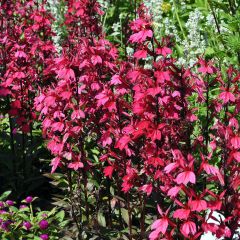
Lobelia speciosa Russian Princess
- Flowering time September to November
- Height at maturity 80 cm
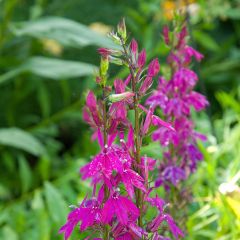
Lobelia speciosa Tania
- Flowering time September to November
- Height at maturity 70 cm
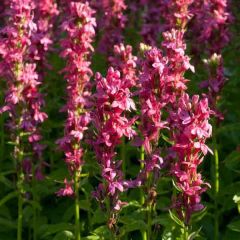
Lobelia speciosa Monet Moment
- Flowering time June to September
- Height at maturity 80 cm
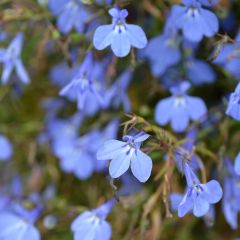
Lobelia erinus Hot Water Blue - Trailing Lobelia
- Flowering time July to November
- Height at maturity 30 cm
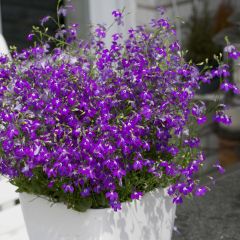
Lobelia erinus Purple Star - Trailing Lobelia
- Flowering time July to November
- Height at maturity 30 cm
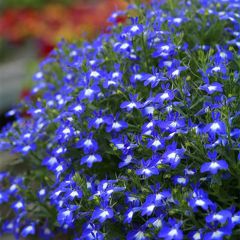
Lobelia erinus pendula Hot Bavaria - Trailing Lobelia
- Flowering time July to November
- Height at maturity 30 cm
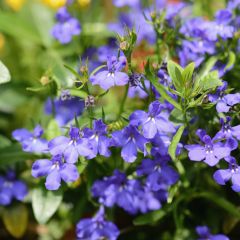
Lobelia Anabel Blue
- Flowering time July to November
- Height at maturity 30 cm
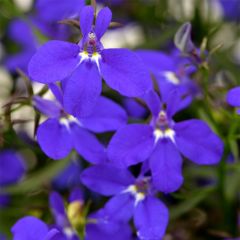
Lobelia erinus Deep Blue Star - Trailing Lobelia
- Flowering time July to November
- Height at maturity 30 cm
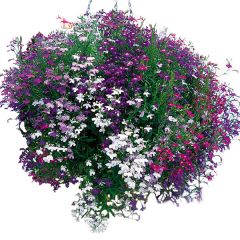
Cascade Collection of Lobelias
- Flowering time July to November
- Height at maturity 25 cm

Lobelia erinus Monsoon - Trailing Lobelia seeds
- Flowering time July to September
- Height at maturity 15 cm
Discover other Lobelia
View all →Available in 1 sizes
Available in 1 sizes
Available in 1 sizes
Available in 1 sizes
Available in 1 sizes
Available in 1 sizes
Available in 2 sizes
Available in 1 sizes
Available in 1 sizes
Available in 1 sizes
Planting and sowing
Where to plant Lobelia?
Hardiness of Lobelia varies according to species and growing conditions. Hardy perennial Lobelias can be planted in open ground, .
Annual Lobelias, more tender, are grown in a large pot that is brought indoors to shelter from frost in severe climates. In areas with frequent hard frosts, it is still advisable to mulch the base of perennial Lobelias to protect the stump over winter. It grows almost everywhere in France but cultivation is more delicate in hot, dry regions or cold, wet regions. It prefers sunny but not scorching or semi-shaded positions. Annual Lobelia, “king of hanging baskets”, with its trailing habit, is ideal in hanging baskets, summer windowboxes and also in borders or rockeries where it forms a pretty plump, very floriferous cushion.
All Lobelias appreciate a well-drained, light, cool soil rich in humus that remains cool, even moist in summer but not waterlogged. Winter wetness is fatal: it needs a well-drained soil in winter.
Some species such as Lobelia siphilitica even tolerate short periods of root submersion; it is ideal in water gardens, beds at pond edges and in understoreys.
The perennial Lobelia lightens the back of borders, bringing verticality and lightness with its generous flowering in upright clusters. Varieties that appreciate cool, even moist summer soils (L. cardinalis and L. siphilitica) can be planted on the banks of a pond.
When to sow and plant Lobelia?
Sow annual Lobelia from March under cover.
Plant perennial Lobelia in open ground from March to June, after spring frosts in cold climates, in September–October in warm climates.
How to plant and sow Lobelia?
On receipt, pot up and keep our young Lobelia plug plants under cover (conservatory, greenhouse, cold frame…) at a temperature above 14°C for a few weeks before planting out as soon as frost risk has passed.
Variable in habit and colour, they can be planted in pots of course, but also in beds or even in a green wall.
In open ground
Plant Lobelia young plants spaced 30 cm apart. Prefer group planting for striking effects in a border. In heavy soil, add compost or potting soil to lighten the substrate and ensure good drainage.
- Dig a hole 2 to 3 times wider than the rootball
- Add a little river sand or gravel to the bottom of the hole
- Plant without burying plant collar
- Backfill with the excavated soil mixed with compost or potting soil
- Firm down with hand or foot
- Mulch and water generously and frequently to encourage rapid establishment
Planting annual Lobelia in hanging baskets or pots
Plant several plants in the same container to create a good group effect, spacing plants 20 to 30 cm apart. Keep substrate consistently cool.
- Plant in a mix of potting soil and compost.
- Spread a good drainage layer (gravel or clay pebbles) at the bottom of the pot for good drainage
- Mulch and water regularly
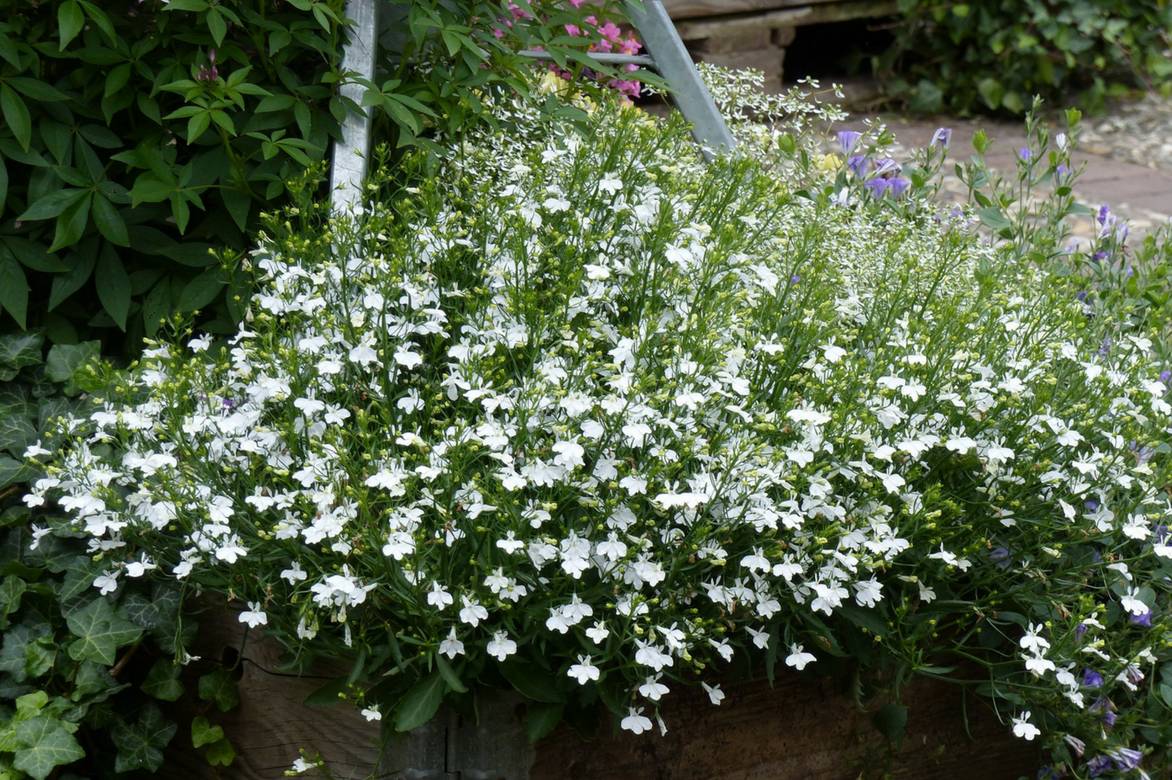
Lobelia ‘Hot White’ divinely brightens semi-shaded corners.
Sowing Lobelia
Flowering appears from the first year; find Lobelia seeds in our nursery.
Under cover :
- Sow under cover between 18 and 24°C, preferably in buckets rather than seed trays, as Lobelia seedlings are quite fragile.
- Mix seeds with a little sand to sow in a seed compost
- Cover seeds barely with a very thin film of substrate
- Keep slightly moist
- Firm down with a board
- Place buckets in sun
- Seeds will germinate between 14 and 21 days
- When seedlings are large enough, plant them in windowboxes or pots in a rich, cool substrate
- Harden off by putting them out a few hours a day if nights are still cool
In open ground :
Sow directly into well-prepared soil enriched with compost or leaf mould, after last frosts, generally in May.
- Cover with a thin layer of substrate
- Firm down
- Water and keep soil moist until germination
- Pull out excess young plants to leave 20 to 30 cm between plants
Care and maintenance
Lobelia requires little care provided soil remains sufficiently rich, perfectly drained and fairly cool in summer.
It needs regular watering, even more during severe drought, to flower abundantly: soil must remain cool. Mulch in May to retain moisture at base with gravel, flax chippings…) and reduce watering.
Lobelia is a greedy plant; to flower abundantly it needs feeding. Apply ripe compost or manure at the base of perennial young lobelia plants each year at the start of spring.
For more generous flowering, every fortnight from May to August, apply a liquid feed to lobelias grown in pots or in hanging baskets.
Remove faded flowers as they appear to encourage new inflorescences. Don’t hesitate to prune after the first flowering to encourage reflowering.
In spring, cut back growth severely to encourage the plant to ramify. Cut the spent flower stems of perennial lobelias.
In autumn, store pots of the most tender lobelias as conservatory plants are treated in harsh climates, in a cool, bright, frost-free place. During winter, reduce watering.
To preserve young plants for many years, divide the largest clumps in spring every two or three years.
Diseases and potential pests
Generally hardy, Lobelia mainly suffers from wet soil in winter. Heavy, poorly drained soil may lead to collar rot.
In spring, protect young foliage from slugs and snails, use fern manure to deter their attacks and follow our advice to combat and prevent damage.
Multiplication
If Lobelia multiplies by sowing, we recommend dividing perennial clumps in spring. Do this on well-established plants aged 2 to 3 years.
- Using a spade, gently separate the small rosettes formed around the base of the plant
- Replant these divisions immediately in the garden in well-worked, well-drained soil
Associating
With a silhouette alternately narrow and airy, or bushy and trailing, Lobelia is invaluable in borders, as a specimen plant, in hanging baskets, by water or to create compact masses in flower beds and add volume. The flowering stems with erect spikes of large perennial lobelias reinforce the curve of a composition with a light cloud of small flowers. It is indispensable for composing gorgeous romantic or blazing summer scenes.

An idea for a combination: rose ‘Rosy Cushion’, Lobelia ‘Monet Moment’, Echinacea purpurea ‘Virgin’, Pennisetum orientale, Gillenia trifoliata.
In borders, pair with lavateras, cleomes and tobaccos. In flower beds with phlox, late astilbes, anemones, impatiens.
Groundcover varieties form plump, floriferous cushions that will gently dress the base of a shrub rose or a clematis, slot between slightly taller summer plants or other annual flowers, or fill hanging baskets all summer.
Red-flowered varieties pair wonderfully with ornamental grasses such as Pennisetum, Stipa, Carex, with small blue blooms of tall verbenas, blue thistles and asters.
Flowers in an astonishing blue or the vibrant colours of lobelias mix beautifully with cool colours, silvered, bluish or glaucous foliage such as Argyanthemum, cinerarias, Helichrysum, small fescues, Hostas, Artemisia lactiflora. They form a striking contrast with yellow foliage of a Carex. Appreciate them with bidens, hardy geraniums, marigolds, veronicas.
Lobelia fulgens and cardinalis are magnificent near water features in damp settings with white- or pink-flowered Physostegia virginiana.
Also create pretty flowering pots by mixing annual lobelias, petunias and Calibrachoas.
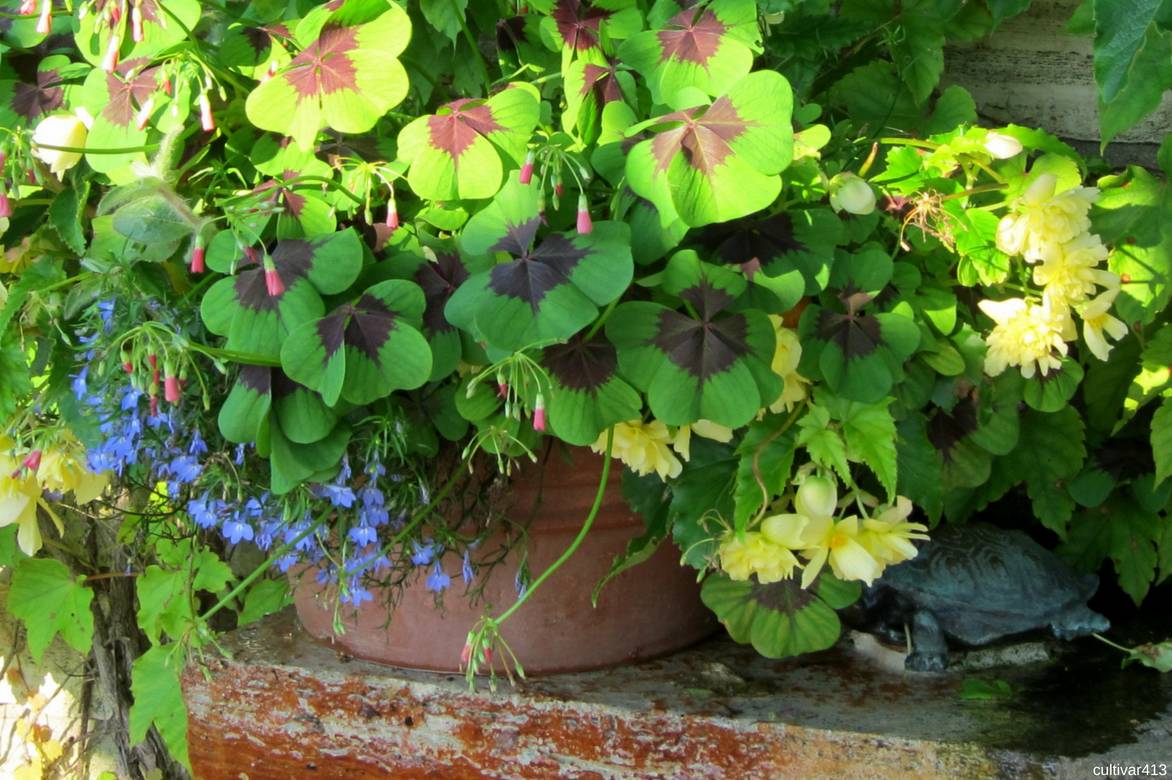
An example combination for a beautiful summer pot: Lobelia ‘Magadi Electric Blue’ (similar to variety ‘Hot Water Blue’), Oxalis deppei and Begonia tuberosa ‘Breezy Yellow’.
Useful resources
- Having beautiful summer or spring window boxes, original and long-flowering, is possible and even easier than it seems with our plug plants of annual flowers
- How to plant window boxes and hanging baskets with annuals in plug plants?
- How to create a beautiful perennial border with our hardy lobelias?
- Discover our 7 combination ideas to create beautiful summer planters
- Subscribe!
- Contents
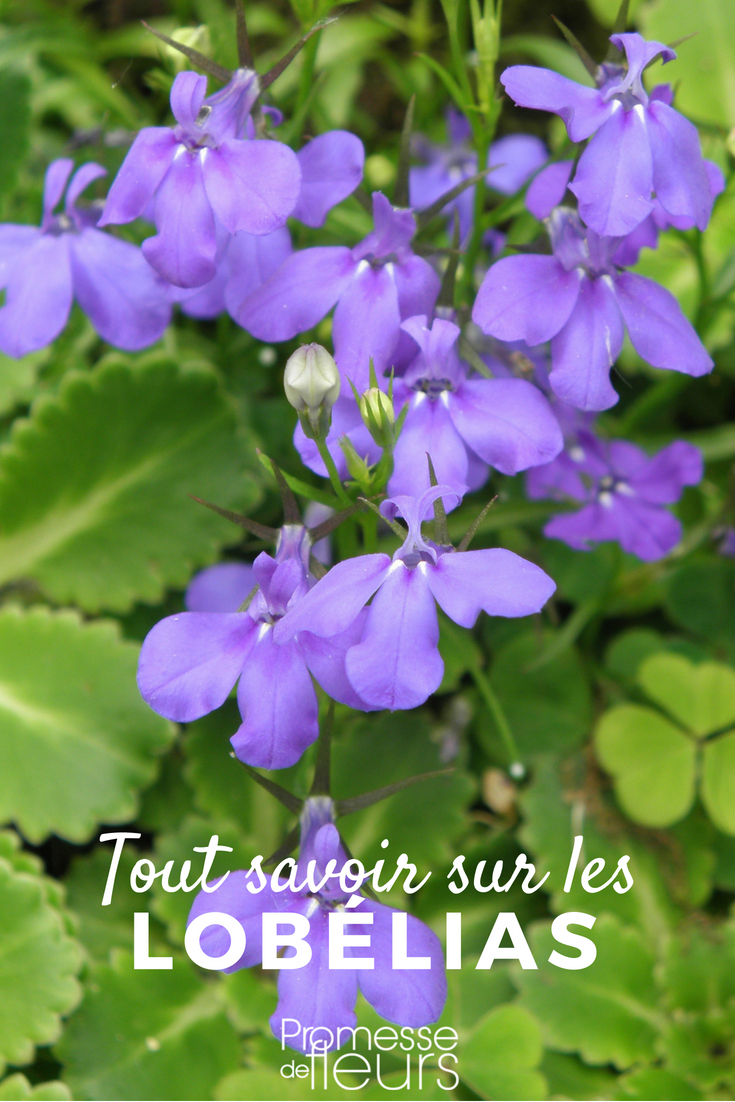































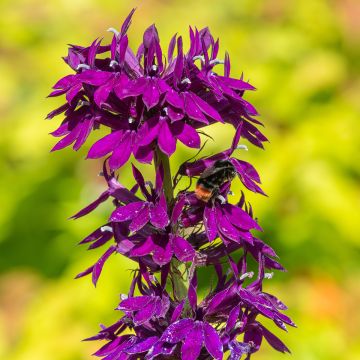
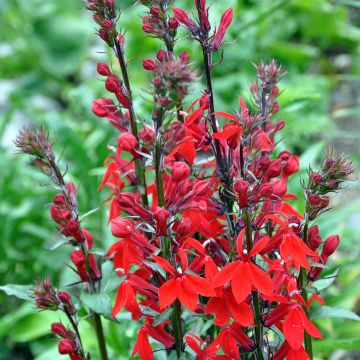

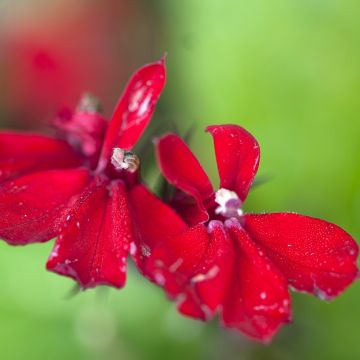

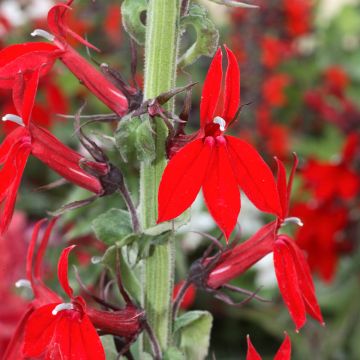
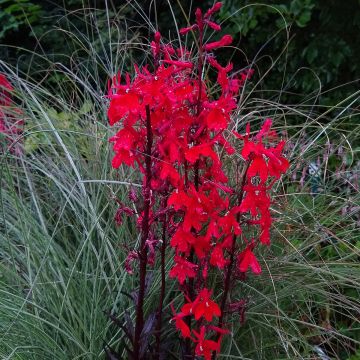

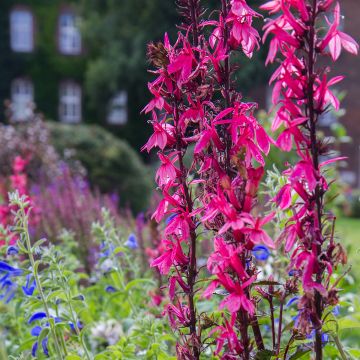

Comments